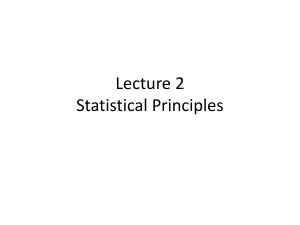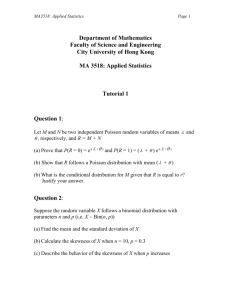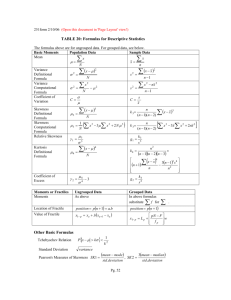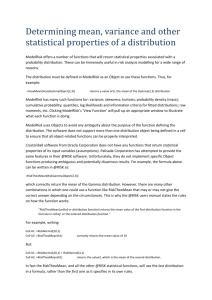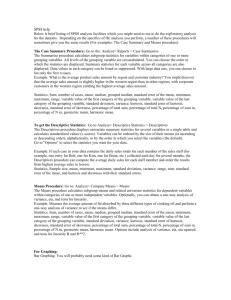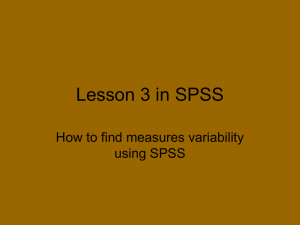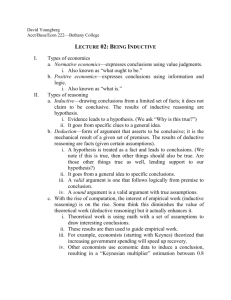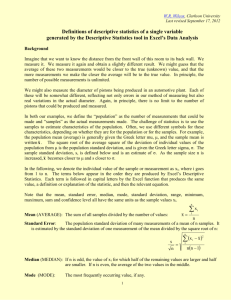Standard Deviation Table - Scholar
advertisement
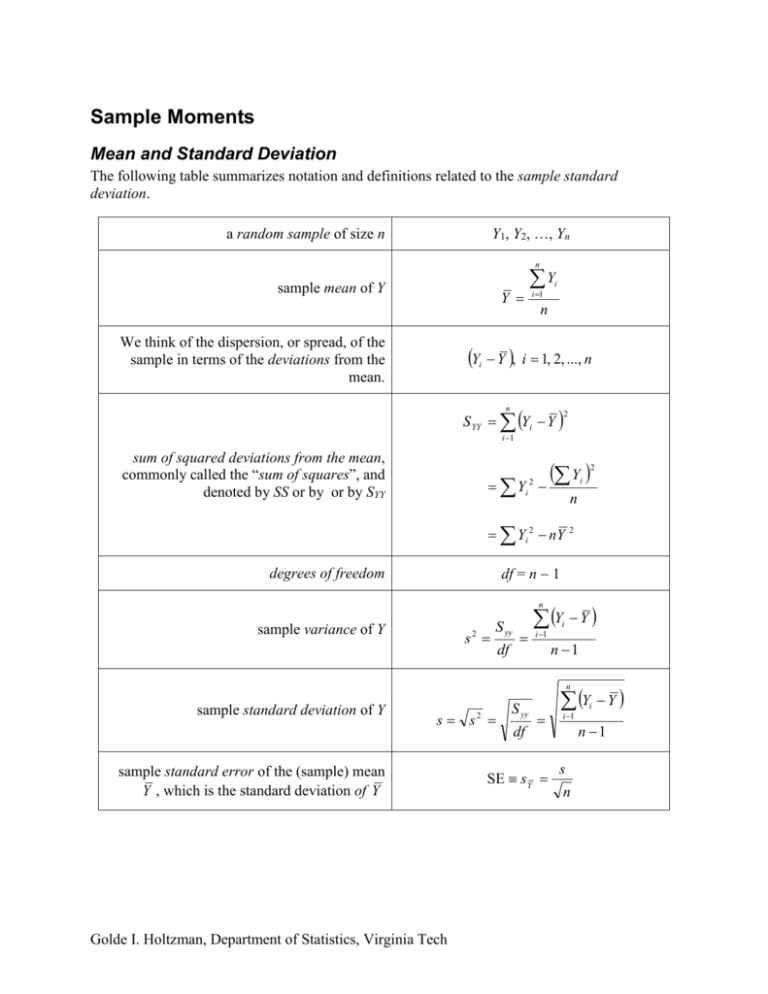
Sample Moments Mean and Standard Deviation The following table summarizes notation and definitions related to the sample standard deviation. Y1, Y2, …, Yn a random sample of size n n sample mean of Y Y We think of the dispersion, or spread, of the sample in terms of the deviations from the mean. Y i 1 i n Y Y , i 1, 2, ..., n i S YY Yi Y n 2 i 1 sum of squared deviations from the mean, commonly called the “sum of squares”, and denoted by SS or by or by SYY Y 2 Yi 2 i n Yi 2 nY 2 df = n 1 degrees of freedom Y Y n sample variance of Y s 2 S yy df i 1 i n 1 Y Y n sample standard deviation of Y s s sample standard error of the (sample) mean Y , which is the standard deviation of Y Golde I. Holtzman, Department of Statistics, Virginia Tech 2 S yy df SE s Y i 1 i n 1 s n Skewness and Kurtosis The sample skewness is a function of the third central moment, i.e., a function of the deviation cubed. See note 1. The sample kurtosis is a function of the fourth central moment, i.e., a function of the deviation raised to the 4th power. See note 1. z n 3 i i 1 n n 1 n 2 z n i 1 4 i where n n 1) n 1 n 2 n 3 zi Yi Y s 3 n 1 2 n 2 n 3 Note 1. The formulas for skewness an kurtosis are those that are used in JMP and SAS. There are several variations (by various authors) on the adjustments made for sample size (and the subtraction term in the kurtosis formula), but all are functions of the third and fourth moments, respectively. Note 2. The mean is the first moment (non-central), or center of gravity. The variance is the second central moment. The skewness and kurtosis are essentially the third and fourth central moments, respectively. One can compute up to the nth central (or non-central) moment for a sample of size n. The central moments can be thought of as a transformation of the n data into an alternative representation (like, for example, the coefficients that are produced by Fourier transformation), that present the same information in a different form. The mean (1st moment) is a summary of the data. The variance (2nd central moment), a measure of dispersion, summarizes the sample giving information beyond that which is given by the mean. The skewness (3rd central moment) gives information about shape, specifically symmetry, that is beyond that which is given by the mean and variance. And so on, as we add successive moments. Each moment gives further information, but each higher moment is in a sense giving us less important information than the lower moments that precede it. Golde I. Holtzman, Department of Statistics, Virginia Tech
